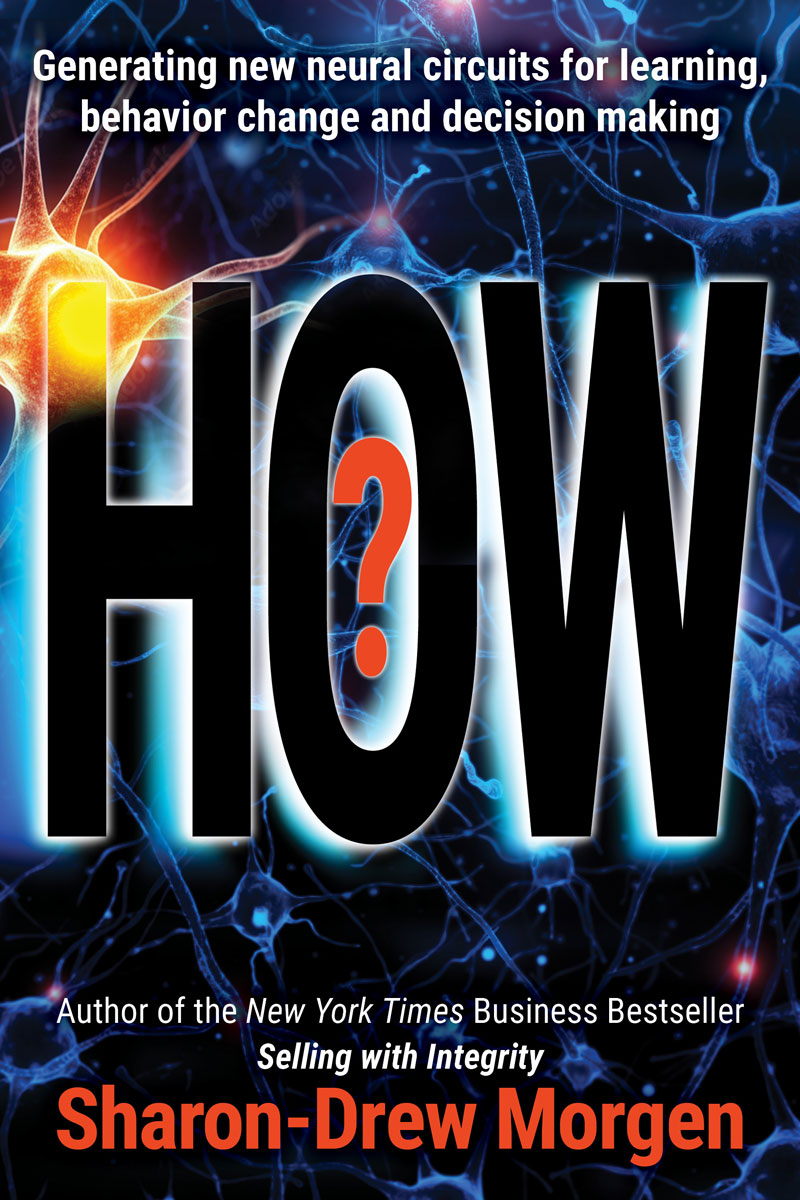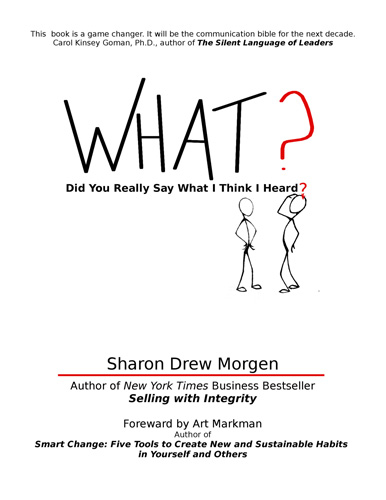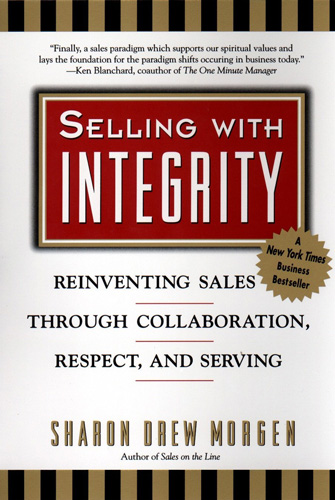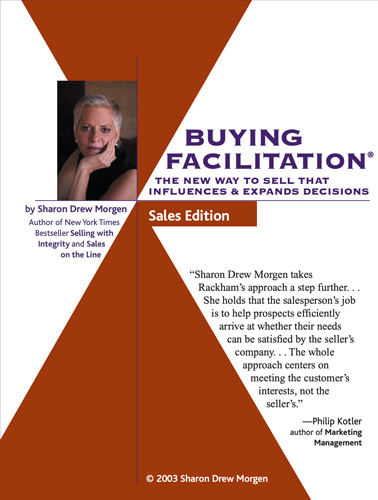 I just read a discussion stream on LinkedIn debating why you’re told ‘Send me an email.’ when prospecting. It’s simple: you’re being rejected. People want to remove themselves from your push. It’s a problem created by the sales model itself.
I just read a discussion stream on LinkedIn debating why you’re told ‘Send me an email.’ when prospecting. It’s simple: you’re being rejected. People want to remove themselves from your push. It’s a problem created by the sales model itself.
I want to begin with a question that has plagued me since I ran a How Buyers Buy training program for KLM in 1987 when teaching them how to integrate the Buy Side into sales: Would you rather sell, or have someone buy?
You’ll say you’d prefer that someone buy. But your continued focus on the Sell Side largely ignores the Buy Side, causing you to struggle unnecessarily getting call-backs, closing, making appointments. Or equally ineffective, you assume your solution, your knowledge, your personality will facilitate buying. It doesn’t.
Surely you’ve realized that the Sell Side is quite different from the Buy Side. Two different activities and mind sets, both involved in a purchase, yet only one of them is addressed in your sales process.
SELLING VS BUYING
Buying is a How, a strategic change problem. Selling is a What and Why, a tactical solution placement problem. Buying involves cultural change and risk to the jobs, resources, and norms of the buyer. Selling involves finding people to give you money for your solution. Two different things requiring wholly different skills, goals, and intentions.
Selling doesn’t cause buying; buying is a change/risk management issue before it’s a solution choice. The very act of selling and your approach to each contact; the very questions you pose and assumptions you make; the content you share causes resistance with all but those 5% ready to buy.
Before people self-identify as buyers they have work to do…work not related to need or purchase, and certainly not involved with what you’re selling: until people manage and get buy-in for their risk of internal change and have tested workarounds – How, rather than What and Why – they cannot risk bringing in something new. In fact, a new solution is the last thing they need. Literally. And the sales model does not address this majority element of a buying decision.
SALES PLACES SOLUTIONS
The goal of sales is to place solutions: Find people who need what you’re selling, ask questions to confirm, then pitch. It assumes:
- you’re asking the right questions at the right time in their change/decision cycle and you can listen without bias;
- the prospect knows specifically what an external solution must include to be incorporated into their system congruently;
- the prospect has completed their 13 steps of change, tested workarounds, and gotten necessary buy-in;
- the person you’re speaking with speaks for the buying decision team, and knows all their criteria for change and risk;
- the risk of bringing in your solution has been managed.
Folks who haven’t yet completed their necessary change/risk management process ignore sellers: they’re still trying to solve their problem internally and haven’t considered going ‘outside’ for a fix. These are the folks who agree to meetings just to take your information. Or the folks who won’t take a call, even though they might later (once they’ve got all their ducks in a row) discover they need you.
By starting with a different goal (i.e. NOT need, but Change Facilitation) and skill set (Listening for Systems, Facilitative Questions™, 13 Steps of Change, etc.), these folks can be easily found and quickly facilitated through their steps of change with their stakeholders included. Once this is done, they buy quickly. With no rejection.
All people must figure this stuff out before they self-identify as buyers, with you or without you. Because of the rigid focus of the Sell Side, they do this without you, leaving you selling to the low hanging fruit – a 5% close rate.
WHY SALES FAILS
The sales model turns a seller into a hammer looking for a nail. It ignores three quarters of the real buyer’s decision journey.
Back in the day when Dale Carnegie told you to sell to need the buying process was much simpler. By maintaining that model, sales has become a stigmatized process that pushes content per the needs of the seller – the reason sales closes such a small percentage, and the reason sellers are told to ‘send me an email’.
Buyers have one criteria:to fix their problem with the least disruption to their system or they will maintain their status quo! The risk of the change must be equal to, or less than, the risk of staying the same. The time it takes them to figure all this out is the length of the sales cycle.
A buying decision is a risk management problem before it’s a solution choice. And the sales model – the Sell Side – doesn’t include facilitating change and risk – the Buy Side – which must be completed before people self-identify as buyers.
So long as you use the sales model as your only tool to facilitate a buying decision, you will have difficulty closing. That’s just not how buyers buy.
FACILITATE BUYING FIRST; SALES SECOND
What if you begin selling by
- using a Change Facilitation model to first search for people solving a problem your solution can resolve,
- then facilitate them through their risk and change,
- help them get buy-in from all who will touch the new solution,
- sell when they’re ready to buy.
It would require new skills but you’d find real prospects on the first call and close in half the time. Are you willing to learn a new skill to facilitate buying?
I’ve invented Buying Facilitation® (Stage 1, Buy Side) process to first find folks during their problem-solving phase and help them through their change/risk management and buy-in. Then sales (Stage 2, Sell Side) places the solution.
You need both. Call me if you want to learn Buying Facilitation® and increase your sales to 40% close. Do you want to sell? Or have someone buy?
__________________
Sharon-Drew Morgen is a breakthrough innovator and original thinker, having developed new paradigms in sales (inventor Buying Facilitation®, listening/communication (What? Did you really say what I think I heard?), change management (The How of Change™), coaching, and leadership. She is the author of several books, including her new book HOW? Generating new neural circuits for learning, behavior change and decision making, the NYTimes Business Bestseller Selling with Integrity and Dirty Little Secrets: why buyers can’t buy and sellers can’t sell). Sharon-Drew coaches and consults with companies seeking out of the box remedies for congruent, servant-leader-based change in leadership, healthcare, and sales. Her award-winning blog carries original articles with new thinking, weekly. www.sharon-drew.com She can be reached at sharondrew@sharondrewmorgen.com.






